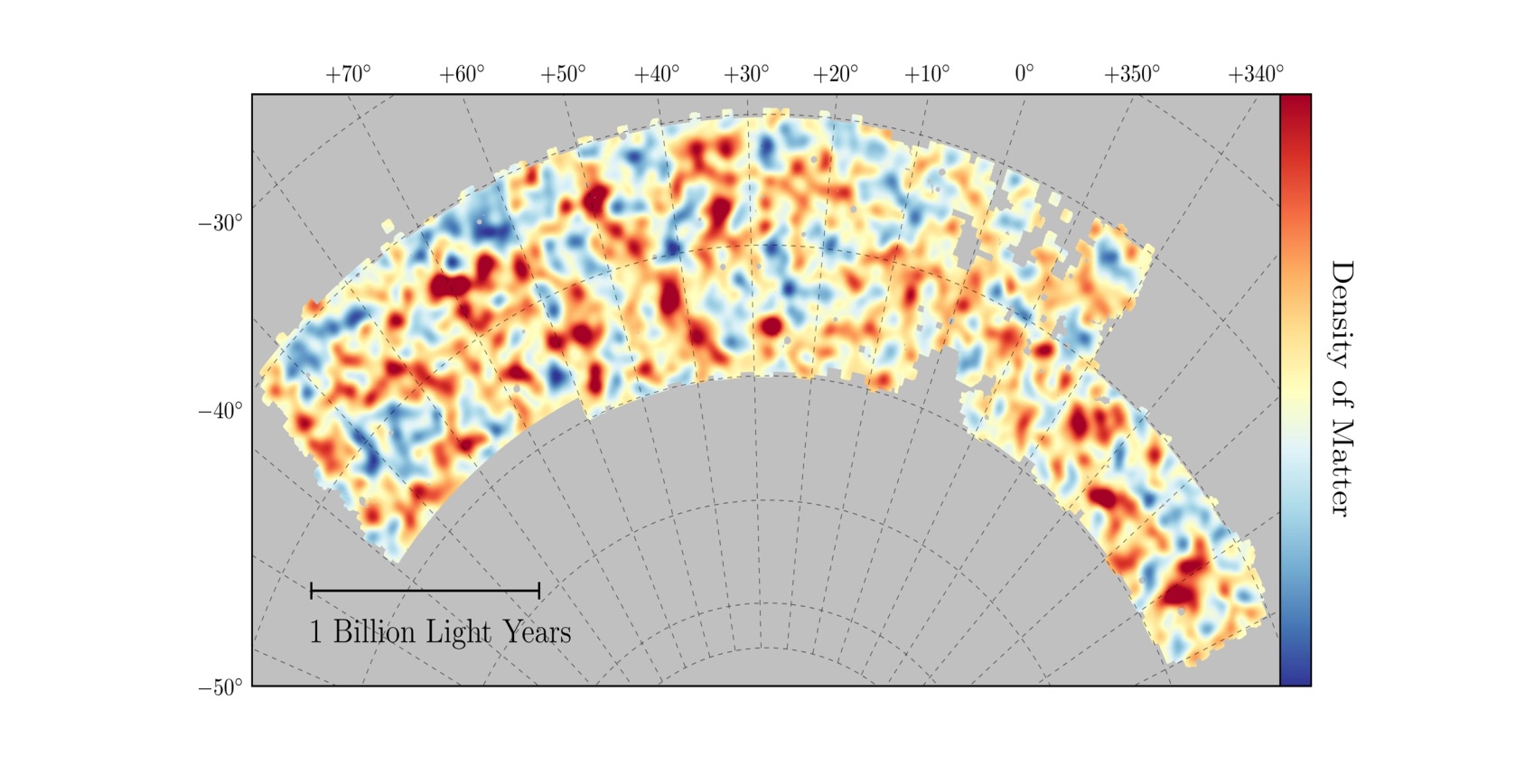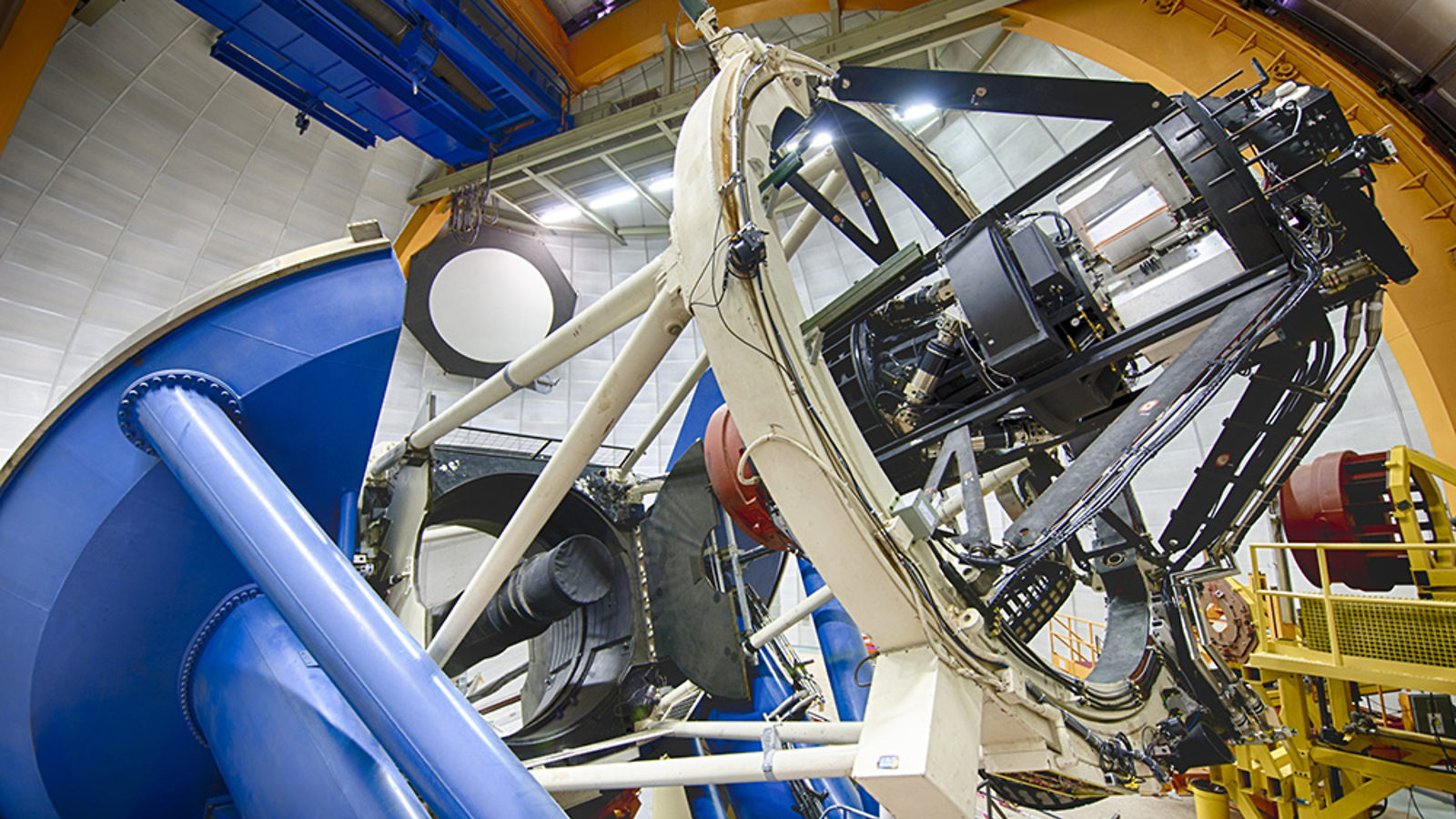Scientists from University of Portsmouth have helped to create the most accurate map of the structure of dark matter in the Universe, supporting the theory that dark energy and dark matter make up most of the Universe.
For the first time, scientists from the international Dark Energy Survey (DES) collaboration, including Dr David Bacon from the University’s Institute of Cosmology and Gravitation (ICG), can see the structure of the current Universe with the same clarity that they can see the Universe at its very beginning – and therefore can answer many questions about how it evolved.
The results from this survey could help to provide answers to one of the most pressing questions of the Universe – why the Universe is expanding at an ever-increasing rate. Crucially, these findings support the theory that about 4 per cent of the present composition of the Universe is ordinary matter, 26 per cent comes in the form of mysterious cold dark matter, and 70 per cent is in the form of an elusive dark energy, possibly causing the accelerating expansion of the Universe.
Dr Bacon, a Reader in Cosmology, said: “Dark matter is invisible to us, but we can see its effects – its gravity is bending the light from distant galaxies, so they look distorted to us. We can work back from measuring the distortions to mapping the cause. It’s so exciting to see this truly vast map of the dark Universe at last.”
Dr Bacon co-led the team which created dark matter maps using data from the 570-megapixel Dark Energy Camera on the Blanco telescope in Chile, one of the most powerful cameras in existence, able to capture digital images of light from galaxies eight billion light years from Earth.
Dark Energy Survey scientists created maps of galaxy positions as tracers, and second, they precisely measured the shapes of 26 million galaxies to directly map the patterns of dark matter over billions of light years, using a technique called gravitational lensing.
Professor Bob Nichol, Director of the ICG and long-time DES collaborator, added: “These results come after a decade of dedicated effort from scientists around the world including here at the ICG. Even though these DES measurements clearly show we live in a Universe dominated by lots of dark stuff; its origin remains a huge mystery to science.”
Surprisingly, it is easier to measure the large-scale distribution of matter in the Universe in the distant past than it is to measure it today.
In the first 400,000 years following the Big Bang, the Universe was filled with a glowing gas, the light from which survives to this day. The European Space Agency’s orbiting Planck observatory created a map of this cosmic microwave background radiation, giving us a snapshot of the Universe at that very early time.

Figure 1: Map of dark matter made from gravitational lensing measurements of 26 million galaxies in the Dark Energy Survey. The map covers over 1300 square degrees of the entire sky and spans several billion light years in extent. Red regions have more dark matter than average, blue regions less dark matter. Image credit: Chihway Chang of the Kavli Institute for Cosmological Physics at the University of Chicago, and the DES collaboration. (Image credit: Chihway Chang of the Kavli Institute for Cosmological Physics at the University of Chicago, and the DES collaboration)
Since then, the gravity of dark matter has pulled mass together over time, while dark energy has been pushing matter apart. Using the Planck map as a start, cosmologists can calculate precisely how this dynamic plays out as the Universe evolves over 14 billion years.

Figure 2: The 4-meter Blanco telescope in Chile, where the DES observations have been taken. (Image credit: the DES collaboration)
Dr Bacon added: “These new DES measurements are very intriguing, as they support the simplest version of our dark universe theory.”
The new results released today draw only from data collected during the survey’s first year, which covers one thirtieth of the sky. Scientists on DES will map an eighth of the sky in unprecedented detail over five years. The fifth year of observation will begin in August.
These results and others from the first year of the Dark Energy Survey will be released today online at
https://www.darkenergysurvey.org/des-year-1-cosmology-results-papers
